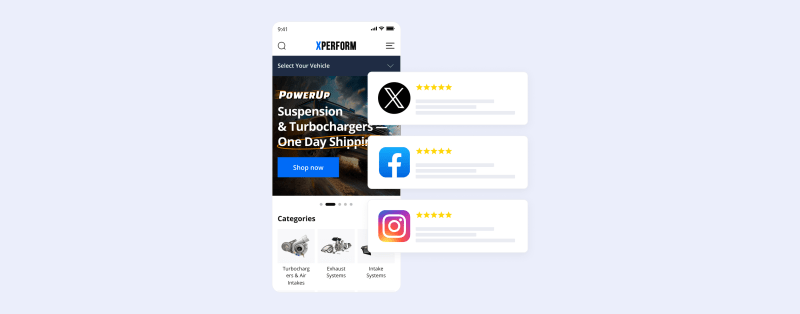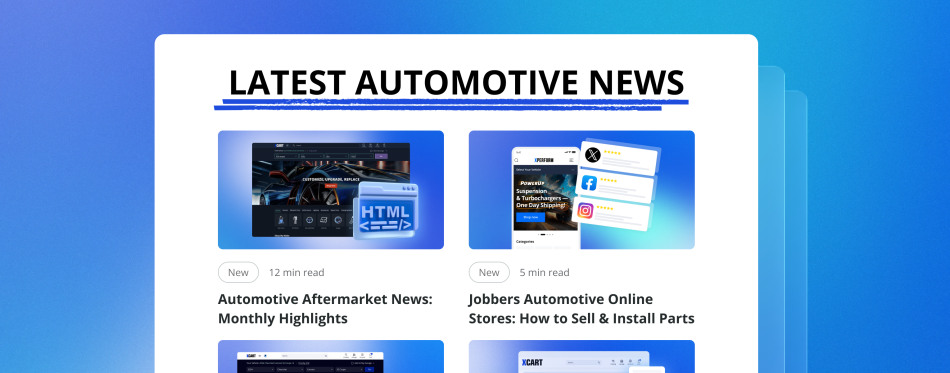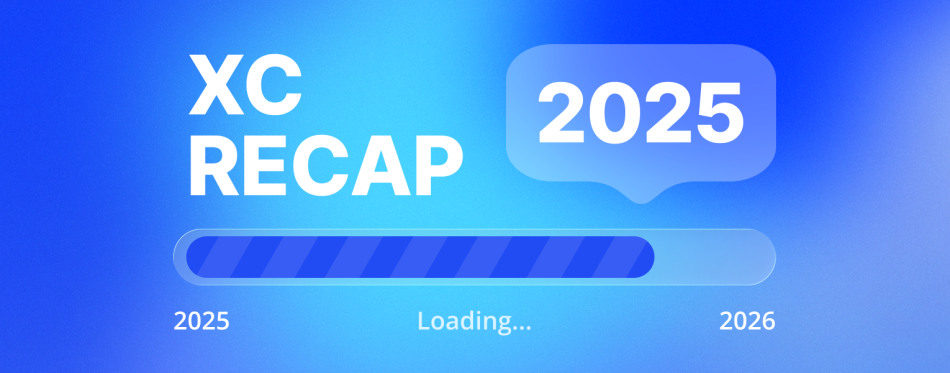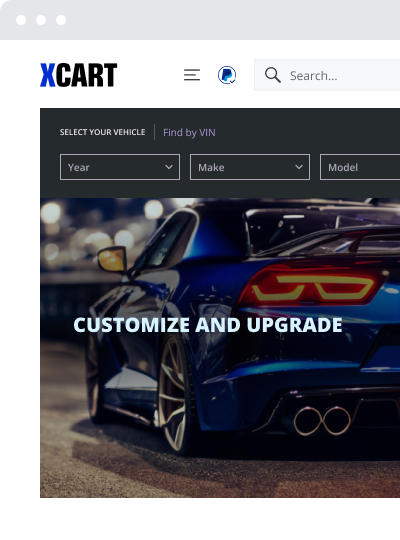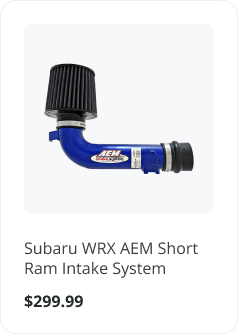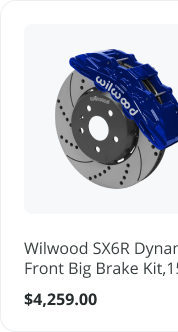How to Win Your Target Audience with Automotive Social Media Marketing
Automotive social media marketing isn’t just for chatting with friends anymore; it’s a powerful tool that brands use to connect with customers, build their reputation, and find new buyers. But it also imposes an immense pressure to maintain a robust and engaging active social media presence.
Today, about 72% of buyers decide on their preferred brand, and roughly 49% of prospective car buyers settle on a specific car model before visiting a dealership, driven entirely by online information. And social media platforms play a major role in this digital-first research process, projected to influence nearly 40% of automotive sales.
Yet, many automotive businesses struggle with taking the full advantage of social media due to common pain points like difficulty in tracking key performance indicators, getting valuable insights, maintaining consistent engagement, and keeping up with digital trends. The solution lies in smart digital strategies that include high-quality video content, targeted hyperlocal digital ads, and proactive use of data analytics.
In this article, we’ll explore the tech behind the scenes, like specialized online stores, marketing strategies, and digital tools for effective social media presence. The key takeaway: For car businesses looking to stay ahead, mastering automotive social media marketing is no longer optional!
Explosive Growth in Automotive eCommerce and Changing Consumer Behaviors
Credence Research puts online aftermarket sales at $72.26 billion in 2024, rising sharply to $243 billion by 2032. So, what’s driving all this growth? Convenience is a huge factor in the automotive industry. People love comparing products, reading reviews, and grabbing the best prices from their couch.

Big online marketplaces like Amazon and eBay, and even automakers’ own websites, offer more choices and simpler shopping experiences. North America, especially, has become a hotspot thanks to excellent internet access, tech-savvy buyers, and the increasing longevity of vehicles, meaning people frequently need replacement parts.
Moreover, social channels are becoming increasingly crucial not just for initial sales but also for customer engagement and post-purchase interactions with existing customers. Digital advertising is expected to drive around 30% of accessories and aftermarket services sales.
Another factor is video marketing content, which has emerged as a critical influencer, alongside paid advertising, with 80% of buyers watching online videos of test drives, vehicle walkarounds, technical reviews, and consumer opinions before making purchasing decisions.
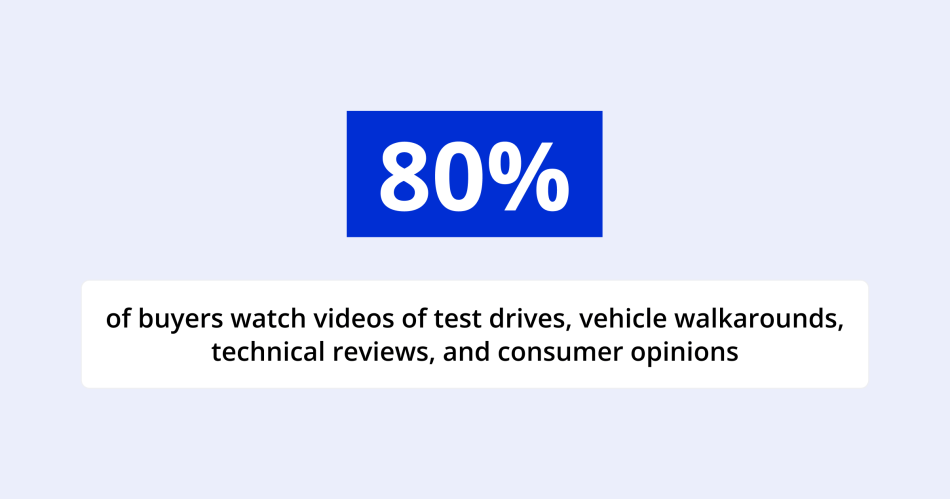
Manufacturer vs. Aftermarket: Different Roads to Social Media Success
It’s not just car dealerships making waves on social media in the automotive industry; big car manufacturers (OEMs) and aftermarket part companies are also deeply involved, though they often take different approaches.
How Car Manufacturers (OEMs) Do It
Big automakers like Ford, BMW, Hyundai, Mercedes-Benz, and Jaguar typically focus on brand image, lifestyle, and emotional connections. They love visually rich platforms like Instagram to show sleek dream car designs and luxury lifestyles. Brands like BMW and Mercedes-Benz often mix professional photos with user-generated content (UGC), encouraging customers to share their personal experiences and pictures.
YouTube is another favorite, where car and parts makers post detailed product videos, brand stories, or even repurpose TV ads. Hyundai famously tapped into influencer culture on TikTok during its Super Bowl campaigns, sparking reactions and buzz. Brands like BMW create viral hashtag challenges (#THE1challenge) targeting younger audiences.
These social media campaigns usually emphasize consumer interests and brand values, like Mercedes and Hyundai promoting sustainability, or Jeep and Land Rover highlighting adventure. Special events and new launches often get their own hashtags (like Nissan’s #TitanAdventure or Ford’s #TryMore), and sometimes major brand changes happen primarily on social media, such as Jaguar’s “Copy Nothing” rebranding campaign.
Aftermarket Brands: Community and Expertise First
Automotive companies selling car parts and accessories, such as K&N Filters, Advance Auto Parts, and ARB 4×4, take a different approach, focusing more on technical knowledge, trust-building, and community engagement. These brands typically connect deeply with DIY enthusiasts and professional mechanics through detailed and informative content.
Partnering with trusted influencers is huge for aftermarket suppliers in an increasingly competitive market. K&N Filters teamed up with YouTube sensation ChrisFix, who created popular installation videos that drove significant sales. Advance Auto Parts used similar strategies, partnering with influencers to show upgrades and installations.

User-generated content is also essential for the automotive industry. Companies encourage customers to share their own experiences installing products, using brand-specific hashtags (like ARB 4×4 Accessories or Ford’s #BuiltFordProud). Thus, they generate social proof directly from the customer community to increase trust and engagement.
For aftermarket automotive brands, how-to videos on social platforms like YouTube and participation in online forums such as Reddit or Facebook groups are effective social media strategies for reaching niche audiences.
Why the Different Approaches?
Social media tactics vary depending on different business goals and the specific audience you aim to reach. Manufacturers aren’t just selling cars but selling a lifestyle. That’s why beautiful visuals, aspirational stories, and emotionally-driven campaigns work best.
Aftermarket suppliers, on the other hand, sell practical solutions and performance improvements. Their content must prove credibility, demonstrate technical know-how, and foster trust through genuine user experiences and expert recommendations. What they have in common, though, is video content and influencer partnerships.
While there’s no single formula for winning on social media, the main goal is to be where your customers are (online). Engaging in online communities, learning more about powerful digital tools to effectively target consumers, and creating genuine and entertaining content are all effective ways automotive brands can win customers on socials.
Key Tools and Automotive Social Media Marketing Platforms
Thriving in automotive social media marketing goes beyond creativity and requires powerful technology, specialized platforms, and digital tools.
1. Specialized eCommerce Platforms: X-Cart Automotive
Automotive eCommerce platforms like X-Cart make your social media campaigns work better by taking care of your social media and website traffic, turning clicks into real sales.
They make sure the part fits
X-Cart lets shoppers filter parts by Make, Model, Year, VIN number, engine type, and more. It also has a handy My Garage feature so customers can save their vehicle details and shop faster next time. When buyers get the right fit the first time, they’re less likely to leave bad reviews or return products, something that really helps keep your reputation strong on social media in the automotive industry.

Easy catalog management makes campaigns smoother
Managing a big inventory can get messy. X-Cart connects with standard automotive data sources like ACES, PIES, ASAP Network, and SEMA Data, so your catalog stays accurate and up to date. When your product information is clean and consistent, it’s easier to run ads that actually convert. And since X-Cart also ties into your warehouse and order systems, you’re better equipped to fulfill all those social media marketing orders quickly.
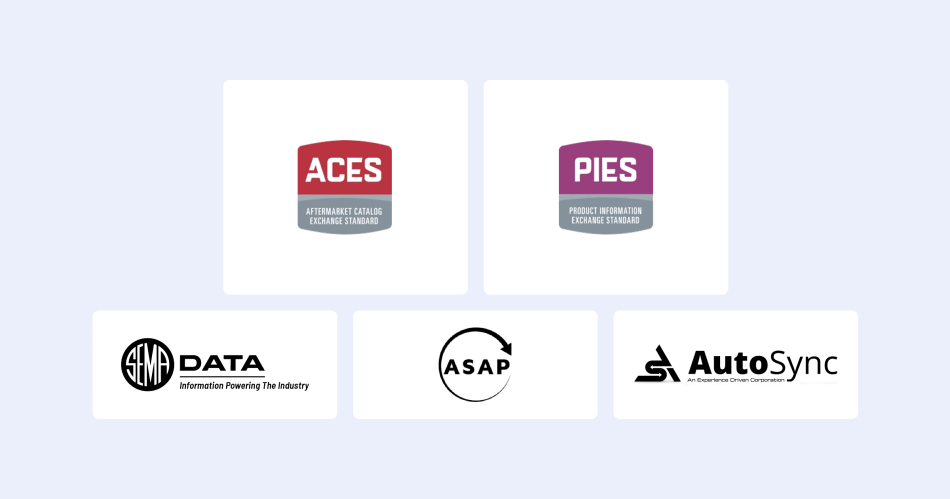
Marketing tools that work with your social ads
X-Cart plays well with Google, Facebook, and Instagram ads. You can upload your full catalog, create personalized ads based on vehicle fitment, and track how everything’s performing with tools like Facebook Pixel. It also drives sales on places like Amazon and eBay Motors, giving your social content even more reach.
X-Cart also comes with powerful add-ons to make your social media ads more effective without juggling extra tools. For example, Facebook Custom Audiences helps you reconnect with past shoppers and find new ones who look just like them. You can target ads to people who’ve visited your site, opened your emails, or engaged with your content before, making every ad dollar work harder.
Plus, Facebook & Instagram Ads Integration lets you upload your catalog automatically to Meta’s platforms and keep your product listings synced and ready for campaigns. You can run personalized ads for specific product groups, manage budgets, and fine-tune targeting from one place.
Other features like social media account login buttons (Facebook, Google, Apple), built-in email automotive marketing, and automatic alerts for back-in-stock items keep shoppers engaged and coming back for more.
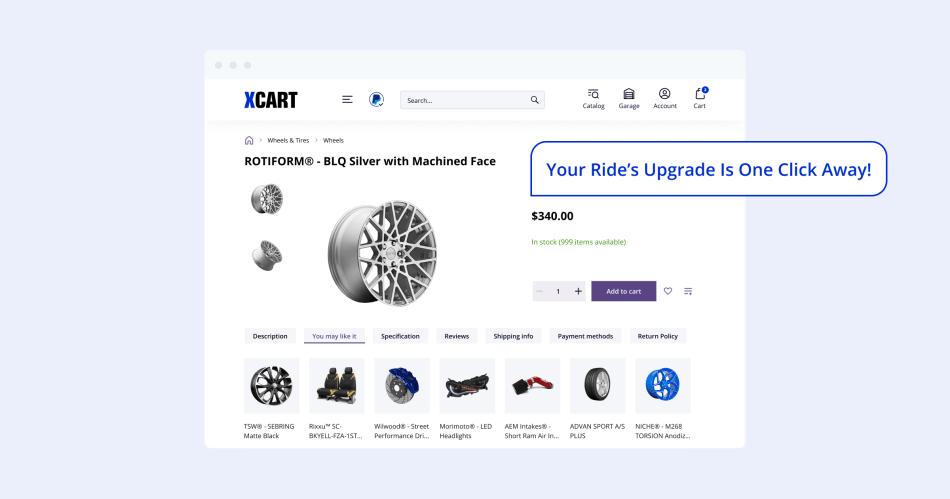
Promotions that actually convert
Running a sale as part of your social media strategy? Offering free shipping or a brand loyalty program? X-Cart lets you set up all kinds of promotions, everything from pop-ups and discount codes to upsell offers at checkout. These tools are perfect for turning social media interest into real purchases.
General eCommerce platforms can’t handle the complexity of auto parts, but X-Cart was built for it. Our tools support accurate fitment, automotive marketing integration, and catalog management to give you everything you need to make your social media marketing efforts pay off. It’s the missing link between engagement and actual revenue!
2. Channels for Automotive Social Media Marketing: What Works Where
Each social media marketing platform offers different strengths for promoting auto parts. Let’s say you’re running a promo for off-road suspension kits. On Instagram, you might post a high-res action shot with a quick how-it-works reel. On Facebook, you’d go for a before-and-after build album plus a link to shop.
On YouTube, it’s a 5-minute walkthrough with expert tips. TikTok? You hook them with a 10-second shock drop and a “wait for it” trail ride payoff.
Here’s a breakdown of social media channels:
| Social Media Platform | Target Audience Overview | Best For | Content Formats | Example of Marketing Communication |
| Broad age range, often 30+ | Community building, retargeting ads | Image posts, albums, live streams, links, reviews | “Install it right: See how customers use our brake kits at home.” | |
| Visual-first users, 18–40s | Product launches, lifestyle branding | Reels, Stories, carousel posts, short videos | “Swipe through our new alloy wheels in 3 finishes.” | |
| TikTok | Younger target audience, 16–30 | Viral product moments, trends | Short-form videos, challenges, trending audio | “Ever seen a jack lift a UTV this fast?” |
| YouTube | All ages, strong DIY and research crowd | Tutorials, reviews, long-form video | How-to videos, unboxings, expert reviews | “Watch our in-depth install of the dual-lever jack system.” |
| B2B professionals, vendors, and dealers | Industry networking, brand trust | Thought leadership posts, product updates | “How we simplified inventory sync for 300+ SKUs using ACES+PIES.” | |
| X (Twitter) | News-seekers, niche hobbyists | Quick updates, engagement, and announcements | Short text posts, GIFs, link shares | “Restock alert: Limited run of red calipers just dropped. 🔧🔥” |
| DIYers, project planners, mostly women | Inspirational content, visual SEO | Boards, pins, step-by-step image guides | “Pin this: 5 brake upgrades for your weekend mod garage.” |
Storytelling is a huge win across all social media platforms. Instead of just saying, “New sliders in stock,” show a customer using them on a rocky trail. Feature installs, mechanic shoutouts, or weekend wrench sessions with user-generated content. So, build credibility, not just clicks.
Whatever the platform, syncing solid content with a strong eCommerce store like X-Cart Automotive and a social media strategy turns engagement into orders. It all works together to increase brand awareness, trust, and revenue.
Essential Tips for Automotive Social Media Marketing
Digital automotive marketing moves fast, and staying competitive means understanding and taking advantage of key trends: video social media content, authenticity, influencer marketing, personalization, and seamless online-offline experiences.
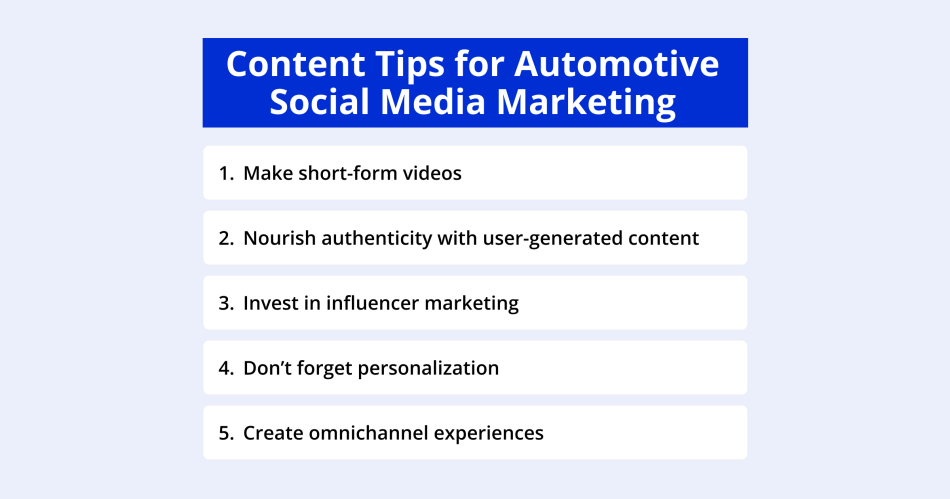
Make Short-Form Videos for Social Media Advertising
Video is king in automotive social media marketing, especially short-form content like TikTok, Instagram Reels, and YouTube Shorts, often amplified by social media influencers. Short videos grab attention quickly, connect with younger audiences, and drive impulse buys.
Automotive brands like BMW and Mohawk Chevrolet are thriving by creating quick and engaging stories, product demos, and relatable behind-the-scenes clips. Short-form content doesn’t need perfect production because authenticity and creativity matter more.
Nourish Authenticity with User-Generated Content
Today’s potential buyers trust real voices more than polished ads. User-generated content, like customer photos, videos, and reviews, builds powerful social proof. Automotive brands encourage UGC through hashtags, contests, and featuring customer posts on official channels.
Actively managing community interaction strengthens customer satisfaction, loyalty, and credibility. UGC isn’t just marketing content, it’s the cornerstone of building real customer communities.
Invest Marketing Budget in Influencers
Influencer marketing effectively builds trust and extends reach across industries. Target audiences see influencers as reliable experts, influencing car and parts purchase decisions significantly. In the automotive industry, brands usually work with influencers on reviews, test drives, and how-to guides.
Micro-influencers often provide stronger engagement due to their authentic connections. That’s why success requires careful influencer selection, authenticity, clear goals, and strong ROI tracking focused on quality engagement rather than just views.
Don’t Forget Personalization in Social Media Channels
Customers now expect personalized experiences across social media platforms. Generic marketing falls flat, while personalized messages boost sales by up to 25%. Auto brands achieve this by using customer data, like browsing history, demographics, and interests, to adjust ads, emails, website content, and product recommendations.
Artificial intelligence, in turn, makes personalization scalable, automatically analyzing customer preferences to create targeted and timely communications for future campaigns. So, you don’t even have to do everything by hand because the latest tools already manage vast amounts of data and can even generate personalized ads for you!
Create Omnichannel Experiences
Car and parts buyers fluidly switch between online and offline interactions (from social media to showroom visits). That’s why automotive brands should offer consistent experiences across all channels for customer journeys to flow naturally.
Effective omnichannel strategies rely on integrated CRM systems, shared customer data, and synchronized communication channels (email, text, chat, face-to-face). Brands offering cohesive omnichannel experiences achieve higher customer retention (89% vs. 33% without), stronger customer loyalty, and improved operations.
Embracing these strategies is the first step for automotive niche businesses on the way to getting ahead in the social media market.
Turn Scrolls Into Sales with Automotive Social Media Marketing
Social media platforms are sales engines for automotive brands that crave real wins and aim to take advantage of great content and technology. In 2025, you need to make sure you’re present wherever your potential customers are and that you show them the content they’ll like.
It may sound a bit overwhelming, but you’re not alone because you have eCommerce platforms like X-Cart Automotive and social media tools working hand in hand for your success. While smart use of video, personalization, influencers, and omnichannel tools will engage customers for long after the first scroll, X-Cart helps further by turning clicks into conversions and real sales with the fitment tools, marketing integrations, and more.
So, if you want to grow in today’s market, don’t just be present. Get your toolkit ready, be strategic, be social, and start selling more!
Need to fuel your eCommerce with social media features?
FAQs
How to do social media for a car dealership?
To succeed on social media, a car dealership should go beyond posting inventory. Focus on building a community:
- Introduce your staff
- Share behind-the-scenes moments
- Post photos of happy customers picking up their new cars
- Use short-form video (Reels, TikTok) for car walkarounds and quick tips
- Act as a local resource by sharing car maintenance advice and promoting community events you’re involved in
Finally, use targeted ads to reach local consumers actively looking to buy.
What is Audi’s social media strategy?
Audi’s strategy is all about aspirational lifestyle storytelling. Instead of listing car specs, they use stunning visuals and high-quality videos to show how their vehicles fit into a luxurious, modern lifestyle.
They frequently partner with influencers, like filmmakers or designers, who embody their brand values of innovation and performance. This approach positions the car as an extension of a premium lifestyle.
How to be a car social media influencer?
Becoming a successful car social media influencer requires passion, consistency, and a unique point of view.
- Don’t just talk about cars. Find your specific angle. Do you want to focus on classic cars, electric vehicles, car modifications, off-roading, or funny car reviews? Your unique “thing” will help you stand out.
- Invest in good photography and video equipment. Showcase vehicles through detailed reviews, walkaround videos, or immersive test drives.
- Your audience will trust you more if you are genuine. Share your honest opinions and personality.
- Post regularly to build an audience and keep them engaged. Develop a content calendar to help you stay on track.
- Respond to comments, answer questions, and build a relationship with your followers. Your community is your biggest asset.
- Connect with other automotive creators, attend car shows and events, and reach out to brands and dealerships. Building relationships can lead to opportunities for sponsorships and access to new vehicles.
About the author

